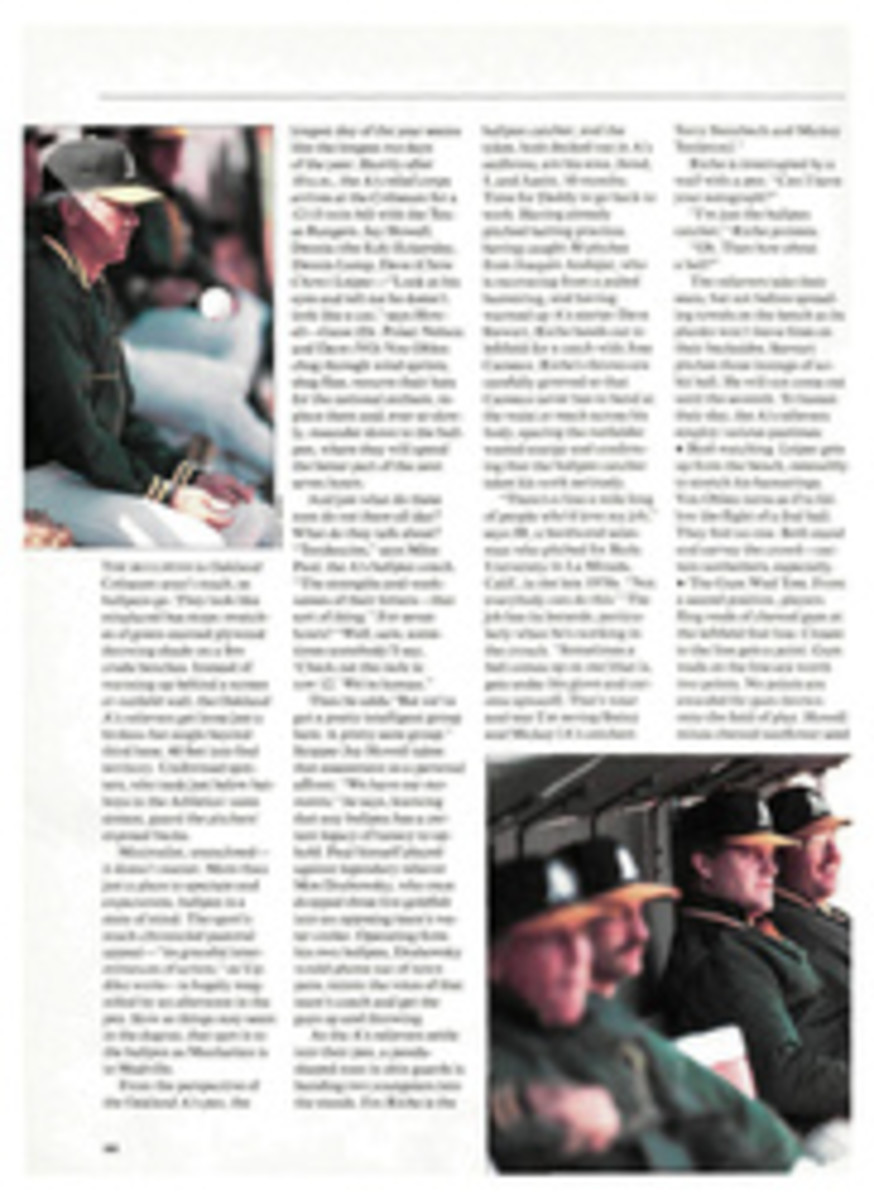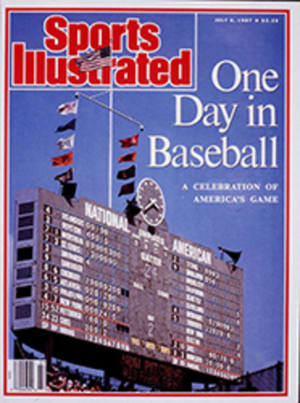
BASEBALL FLANNELS ARE HOT
Here's a new twist to the old boy-meets-girl ritual: Young woman standing in line at a bank is approached by a man who admires her baggy old-time baseball shirt with BOSTON across the front and a big number 9 on the back.
He: "What did you do, rob the Baseball Hall of Fame?"
She: "Pardon me?"
He: "Where did you get that '51 Ted Williams road jersey?"
She: "At a little shop right here in Philadelphia. Do you like it?"
He: "Like it? I'd kill for it. Can I get the address—and yours too maybe?"
That the period jerseys he so carefully re-created would become a fashion statement or a social icebreaker amuses Peter Capolino, 42, owner of Mitchell & Ness Sporting Goods at 1229 Walnut Street in Philadelphia. He had envisioned his customers as mid-life males who, to bring back the green grass of youth, would gladly pay $90 to $175 for a '39 Joe DiMaggio or a '51 Willie Mays.
Capolino specialized in contemporary pro uniform shirts and historic baseball caps until one spring day in 1985, when on a visit to a local manufacturer, he noticed some piles of long-discarded wool flannel. The company, Maple Manufacturing, had used the material to make local amateur and college uniforms in the days before double knits. Big league teams switched to synthetics in the late '50s, having worn the heavy wool flannels through every summer.
If baseball hats can sell, why not shirts, thought Capolino. Collectors will pay $2,000 to $25,000 for authentic uniforms, so wouldn't a serious fan pay $125 for a good reproduction of a shirt?
His first shirt was a copy of a genuine '49 Roy Sievers jersey that a collector had brought in for repair—a vivid St. Louis Browns number 15 with orange-and-brown 3D lettering. To meet the exacting needs of his customers, who know every squiggle and nuance in the old uniforms, he put in days of research. A key source turned out to be directly upstairs from his shop—Reedmor Books, a rambling warehouse of a store. Capolino leafed through piles of old sports journals, looking for the right photos. He spent months chasing down a single emblem, the smiling Indian warrior on the sleeve of a 1957 Milwaukee Braves uniform, eventually finding it at a baseball-card show. Warren Spahn's number 21—bearing the emblem and a bright tomahawk across the zippered front—is today the handsomest, most expensive ($175) and biggest-selling shirt at Mitchell & Ness. Another popular shirt, a colorful '46 Musial, is coveted partly because '46 was a year in which the emblematic bat holding the two redbirds was black, not the customary gold.
The male shirt buyers are decidedly white-collar and frequently emotional. "I have a friend, a stockbroker, who never mentioned baseball until he came in one day and saw a '51 Ted Williams," Capolino said recently, standing in what he calls the Hall of Fame section of the store. "He turned red and began to shake. He put on the shirt and said, 'I've got to have this. When I was nine, I got Ted Williams' autograph. I've had it in my wallet ever since.' To borrow that Notre Dame phrase, these shirts are waking up the echoes."
The baseball taste of women customers, who find the baggy shirts stylish, is impeccable. The top two shirts on their lists are a '49 Phillies home jersey with red and navy letters with the i's dotted by stars and a '51 Willie Mays with GIANTS spelled out in orange and black.
"In the punk-fashion world," says Capolino, "old Japanese baseball shirts were big last year. The Antique Boutique in New York City brought in 15,000 of them. American women are riding that wave."
Not for long, alas. Capolino figures his cache of wool flannel will give out within the year. Unless he finds a manufacturer to make a new supply, he may have to concentrate next on historic warmup jackets and caps, a number of which he already carries. "The players wore very long jackets in the old days," he says, "and that fits in with today's look." A new line of caps is under study—the flat "pancake" hat worn in the first half of the century. Doesn't sound much like a fashion statement, but who knows?
PHOTO
JAMES DRAKE
In their store, Capolino models the 1946 Musial while his wife, Fran, sports a Spahn.
David Butwin lives in Leonia, N.J., and treasures his 1949 Brooklyn Dodgers pennant.

